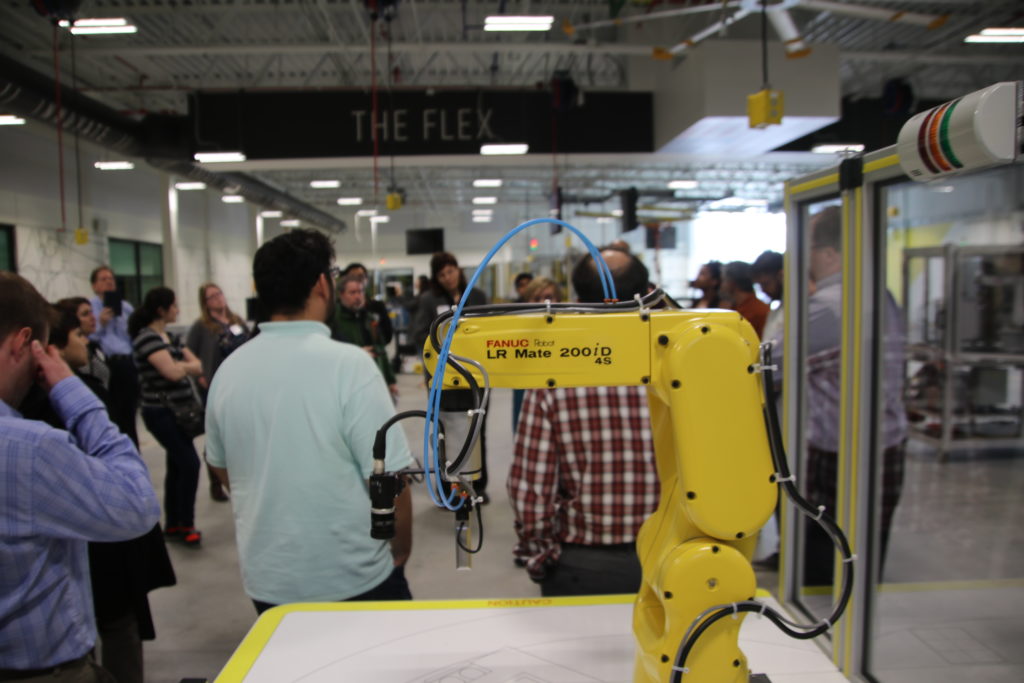In a Nutshell:
- This month marked the one year anniversary of the Michigan Reconnect program launch
- Evidence supports the notion that Michigan will benefit from higher rates of degree/postsecondary credential attainment
- Attrition has been an issue in the Tennessee programs that served as a basis for Michigan Reconnect, and so the state must be prepared to focus on student retention and support for student needs
The Michigan Reconnect program that was first proposed by Governor Whitmer in her 2019 State of the State address, and officially created in 2020 advertises a tuition-free path for Michiganders over the age of 25 to complete an associate degree program and/or approved skill certification. The state has set a corresponding goal of 60 percent of the population possessing a postsecondary credential by 2030. Data show that there are tens of millions of Americans with some college/no degree, making this adult population appear to be low-hanging fruit for policies seeking to boost degree/certification attainment.
This month marks the one-year anniversary of the program’s implementation, and the state has touted that “91,000 Michiganders are on a tuition-free pathway to attain degrees and skills for new opportunities that lead to rewarding careers.” Enrollment on the pathway, however, is not a guarantee of degree completion.
A tuition-free pathway is not necessarily cost- or obstacle-free, however, and so the state must be sure to keep Michigan Reconnect connected to student needs. While this process must be driven by data-collection, program evaluation, and the political will to make program revisions, lessons from similar programs (namely the Tennessee programs that served as a model for Michigan Reconnect) may help guide future analysis.
Degree Attainment in Michigan
It is estimated that, by 2025, 60 percent of the population will need some combination of education, degree, and/or quality credential beyond high school. Michigan lags the nation in this measure, with only a handful of counties on track to meet the goal (Washtenaw is the only county to already exceed this goal with 65.4 percent of its population possessing a postsecondary degree or credential). Certificates and credentials aside, Michigan also lags the U.S. in overall postsecondary degree attainment (41.7 percent of Americans over age 25 have an associate degree or higher, compared to 39.4 percent of Michiganders).
Michigan’s goal of 60 percent by 2030 is a stark acknowledgment that Michigan has fallen behind in the race for talent, placing the state at economic and social disadvantages.
It is not yet clear if Michigan Reconnect will be sufficient to meet the “60 by 30” goal. The situation is further complicated by declining community college enrollment in recent years. During the fall 2020 semester, community college enrollment in Michigan fell by 13.2 percent compared to the previous fall. Declining enrollment has continued nationwide, a trend that began in Michigan prior to the coronavirus pandemic.
The gap in bachelor’s degree attainment is even larger for the state, with 33.1 percent of Americans and only 30 percent of Michiganders over the age of 25 having earned a four-year degree (or higher). Michigan’s underinvestment in universities has not helped the situation, driving up tuition costs and reducing quality.

Individual and Community Benefits of Degree Attainment
Talent is essential for economic development and prosperity. States (and other jurisdictions) have essentially two options when it comes to talent: lure it from elsewhere or cultivate it at home. Michigan is wise to invest in its own human capital through Michigan Reconnect, because, while economic development is an important dimension of the program, degree attainment has been shown to yield numerous individual and community-level benefits.
It is widely documented that college graduates have higher incomes and lower rates of unemployment on average. College graduates are also less reliant on public assistance and display greater civic engagement, volunteerism, and charitable giving.
At the community level, boosting degree attainment reduces both poverty and inequality. Some research has suggested that the higher incomes received by those receiving a college degree have spillover effects on the incomes of others in the local economy, even those who do not obtain college degrees. A recent analysis estimates these spillover effects add 86 cents in additional income for each $1 in direct additional income earned by college graduates.
College graduates are also healthier on average. Lower education level is a predictor of premature mortality, and college graduates consequently enjoy greater life expectancy than those with less education. In fact, life expectancy for those without a bachelor’s degree is falling in the United States.
To illustrate these phenomena, Michigan counties with the highest levels of degree attainment (Washtenaw, Oakland, Livingston, Kent, Clinton, Ottawa, Kalamazoo, Leelanau, Grand Traverse, Ingham, and Midland) are also generally the most prosperous and healthiest in the state. Similarly, states wherein the population achieves higher levels of degree attainment tend to boast better measures of economic and social well-being.
To be sure, it is almost impossible to calculate to what degree educational investments might address economic and health disparities. On the one hand, higher levels of education may influence an individual’s health behaviors and access to material resources (including health care); on the other hand, household and community factors in a child’s environment may contribute to both educational achievement, occupational opportunity, and health and longevity.
Wherever the line between correlation and causation is drawn, substantial evidence supports the idea that public investment in higher education provides multiple dimensions of value to the individual and society.

Credit: Michigan Municipal League
Policy Choices that Characterize Scholarship Programs
Michigan Reconnect is but one among many “free college” programs in Michigan, including city/regional programs (e.g., “Kalamazoo Promise”) and institution-specific programs (e.g., “Go Blue Guarantee”).
Although the wide, rapid diffusion of scholarship programs throughout Michigan and the U.S. has led to substantial variability, a few key characteristics can help classify differences across programs.
Tuition-free vs. Debt-free
Tuition is not the only source of cost for students pursuing higher education, nor does it constitute the majority of costs in most cases. Learning materials (like textbooks, computers, and other supplies), transportation, and living expenses all factor into the cost of pursuing a degree or other credential. Often driven by market forces in college towns, these costs may blossom into a substantial debt burden for students beyond the cost of tuition.
A tuition-free policy approach to many scholarship programs (including Michigan Reconnect) focuses solely on tuition costs (sometimes also including incidental fees associated with course registration and school attendance). It is worth noting that the Michigan Reconnect program’s eligibility criteria mean that it is only tuition-free for students attending a community college where they are in-district.
In contrast, debt-free policies consider other expenses associated with learning.
First or Last Dollar Programs
A first-dollar program provides funding without consideration of other sources of federal, state, or institutional financial aid. In contrast, last-dollar programs (like Michigan Reconnect) only distribute funds to eligible individuals to pay costs remaining after other sources of aid have been utilized. Last-dollar approaches have greater need of oversight (adding costs) but tend to substantially reduce the amount of aid provided, making them less costly overall.
Some research has also described so-called middle-dollar approaches to scholarship programs. In these instances, a generally last-dollar structure is adopted, but some amount of funding is made available to cover non-tuition expenses when the cost of tuition is covered by other sources of aid. Policymakers might also choose to have scholarship disbursement preempted by federal student aid, but not other sources of grants and scholarships.
Michigan Reconnect’s last-dollar structure limits state expenditures by ensuring that students avail themselves of other grants and scholarships first (e.g., Pell Grants). At the same time, this approach does little to limit student debt or surmount non-tuition expenses that may pose obstacles for certain students or degree/certificate programs.
Two-year vs. Four-year Credentials
The Kalamazoo Promise, Go Blue Guarantee, and many other scholarship programs provide funding for four-year public colleges and universities in Michigan, but many others (including Michigan Reconnect) restrict eligibility to two-year colleges and/or technical schools offering certain skill certifications. Policy sometimes imposes further restrictions by field of study (focusing on programs offering career training for fields considered “in-demand”).
Two-year credentials are unquestionably valuable, but if scholarship eligibility sways qualified low-income students away from universities in cases where a four-year degree is their preference, it could lead to undermatching of students to institutions. Additionally, the last-dollar structure of the program may put low income students at risk of using up Pell Grant eligibility during associate degree studies, creating a major future barrier to bachelor degree completion. Policies favoring two-year institutions might therefore further entrench existing class-based divisions of skill, occupation, and income.
Eligibility Criteria
Scholarship programs grounded in economic development sometimes differ from other forms of governmental aid for education in that they are generally neither means-tested nor merit-based. Nonetheless, various alternative eligibility criteria are still common.
Most programs (like federal student aid) mandate that students maintain satisfactory academic progress, but some may go further with grade point average (GPA) requirements or full-time study requirements. Michigan Reconnect requires that students maintain a 2.0 GPA and maintain half-time (6 credits) status during two semesters of a calendar year. Michigan was wise not to implement a full-time study requirement (as was done in the Tennessee Promise), as half-time study may be more accessible for returning adult students with a need to balance school with work and household responsibilities.
Last-dollar programs generally require students to complete applications for other aid (such as completing the FAFSA financial aid application). Michigan Reconnect requires recipients to apply for federal aid and instructs community colleges to ensure all other scholarship and grant sources are utilized before the state is billed.
Tennessee data reveal that many (in some cohorts, the majority) qualify for other assistance to the point that there is no state expenditure (as tuition is already fully covered by Pell Grants or other aid sources). Indeed, the power of programs like Michigan Reconnect to increase degree attainment may be less in the tuition expenditures and more in the new marketing of “free college” for individuals who may not have known they already qualified for tuition assistance through other programs.

Credit: Corey Seeman
The Need for Continuing Evaluation
It’s impossible to predict the outcomes Michigan Reconnect will achieve only one year into implementation. Review of the Tennessee scholarship programs Michigan used as a model reveal that declining enrollment and high rates of attrition became issues in the years immediately following implementation. To ensure the program meets its expressed goals, Michigan would be wise to continue investing in support for community messaging, and in particular to support community colleges in their student support and retention efforts.
It is also important to consider that tuition may not be the only barrier to further education. Childcare has become an important public investment for economic development; caregiving responsibilities affect an individual’s ability to pursue further education, and it remains to be seen if state investments in childcare passed last fall will be sufficient to overcome this potential barrier to education and employment.
College preparedness may be another barrier, suggesting a need for remedial courses and tutoring support (the availability of which necessarily varies by institution).
For lower income individuals, costs associated with books, materials, transportation, and other related expenses may pose a disproportionate financial obstacle. Because lower-income individuals are more likely to qualify for Pell Grants and other need based assistance, there is certainly an argument for a middle-dollar approach to Michigan Reconnect that would provide support for books/supplies (particularly when an approved enrollee is not actually receiving any tuition support from the program).
The Michigan Reconnect program has set appropriate goals to invest public dollars in developing human capital and bolstering the opportunity for future state prosperity. Nonetheless, no program is likely to be perfect in its first iteration. Oversight and evaluation will be needed to ensure that actual outcomes match program goals and justify continued investment.

